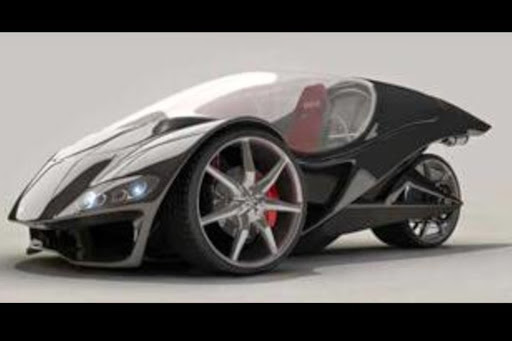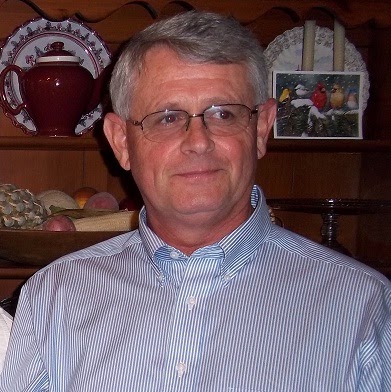Larry A Sharp
age ~87
from Casey, IL
- Also known as:
-
- Lawrence A Sharp
- Laurence A Sharp
- Larrya Sharp
- Phone and address:
-
103 E Adams Ave, Casey, IL 62420
2179322458
Larry Sharp Phones & Addresses
- 103 E Adams Ave, Casey, IL 62420 • 2179322458
- Greenup, IL
- Mundelein, IL
- 103 E Adams Ave, Casey, IL 62420 • 2177666155
Work
-
Position:Food Preparation and Serving Related Occupations
Emails
Resumes

Larry Sharp
view source
Larry Sharp
view source
Larry Sharp
view source
Larry Sharp
view source
Larry Sharp
view source
Larry Sharp
view source
Larry Sharp
view source
Larry Sharp
view sourceMedicine Doctors

Larry Eugene Sharp
view sourceSpecialties:
Family Medicine
Hospitalist
Hospitalist
Education:
The University of Texas at Houston (1983)
Us Patents
-
Thermal Switch Device And Method Of Making
view source -
US Patent:40165221, Apr 5, 1977
-
Filed:Dec 22, 1975
-
Appl. No.:5/642971
-
Inventors:Larry Lee Sharp - Schaumburg IL
-
Assignee:Illinois Tool Works Inc. - Chicago IL
-
International Classification:H01H 3776
-
US Classification:337403
-
Abstract:A thermal switch for automatically opening a circuit when the ambient temperature is increased to a predetermined level. A pair of conductor wires are arranged in side by side fashion with extremities extending in the same direction. A spring portion is included in at least one of the conductor wires to provide stored energy when the spring is biased into electrical contact with each other. A localized contact region is included in the conductor wire in the region below the spring portion but spaced upwardly from the associated extremities to create a lever arm. The extremities, contact region, lever arm and spring being encapsulated with a heat fusible material which biases the conductor wires into contact with each other and which is coated with a rigid insulating material to retain the conductor wires electrically insulated from each other except at the contact region. The heat fusible material holding the conductors into electrical contact until the temperature level reaches the level at which the fusible material flows thereby allowing the contacts to be separated due to the energy stored by the spring.
-
Electrical Apparatus Configured For Predetermined Encoding
view source -
US Patent:47045051, Nov 3, 1987
-
Filed:Aug 6, 1986
-
Appl. No.:6/893888
-
Inventors:Larry L. Sharp - Rolling Meadows IL
-
Assignee:Illinois Tool Works Inc. - Chicago IL
-
International Classification:H01H 902
-
US Classification:200 6108
-
Abstract:An electrical apparatus configured for predetermined encoding. The apparatus is comprised of a substrate, a plurality of pairs of electrical terminals affixed to the substrate, a plurality of conductive circuit traces connecting respective pairs of terminals, and a like plurality of removable plugs in the substrate intermediate respective pairs of terminals. The conductive circuit traces respectively traverse respective plugs intermediate respective pairs of terminals so that removal of a plug interrupts the electrical continuity of the conductive circuit trace traversing that plug, thereby creating an electrical open circuit between the respective terminal pair. In such manner, logical "zeroes" (opens) can be created in the respective terminal pairs or, by electing not to remove a given plug a logical "one" (closed electrical circuit) can be programmed between a given electrical terminal pair. While the apparatus is intended, in its preferred embodiment, to be a one-time programmable apparatus, field repairs of the apparatus can be effected by replacing a plug with a segment of a conductive circuit trace carried thereon with the segment of the conductive circuit trace aligned with the remaining portions of the conductive circuit trace and effecting electrical connection between the removed segment and the remaining portions of the conductive circuit trace to re-effect electrical continuity between the respective terminal pair.
-
Combined Thermal And Electrical Cut-Off Device
view source -
US Patent:42271690, Oct 7, 1980
-
Filed:May 10, 1979
-
Appl. No.:6/037988
-
Inventors:John K. McVey - Bensenville IL
Larry L. Sharp - Schaumburg IL -
Assignee:Illinois Tool Works Inc. - Chicago IL
-
International Classification:H01H 8502
H01H 8520 -
US Classification:337182
-
Abstract:The device described herein is useful in applications which formerly required both a thermal cut-off device and an electrical fuse. This device will open an electrical circuit in response to either an increase in ambient temperature or an increase in electrical current. A bracket is provided to support a radial lead thermal cut-off device. The bracket is of a general C-shaped configuration and has an extending lead bar that is crimped into electrical engagement with an input lead, and one radial lead of the thermal cut-off device is crimped into electrical engagement with the second input lead. A helical conductive coil has one end welded or otherwise secured to the C-shaped bracket, and the second lead of the thermal cut-off device is crimped to the other end of the helical coil which is positioned over the thermal cut-off device so as to surround it. Thus, an ambient temperature rise may cause the thermal cut-off device to open the electrical circuit; or alternately the heat generated by the I. sup. 2 R loss in the coil due to excessive electrical current flow may cause the device to also open.
-
Thermal Switch And Method Of Making
view source -
US Patent:41351762, Jan 16, 1979
-
Filed:Oct 21, 1977
-
Appl. No.:5/844414
-
Inventors:John K. McVey - Chicago IL
Bruce A. Luxon - Bensenville IL
Larry L. Sharp - Schaumburg IL -
Assignee:Illinois Tool Works Inc. - Chicago IL
-
International Classification:H01H 3776
-
US Classification:337404
-
Abstract:A thermal switch device for automatically opening a circuit when the ambient temperature is increased to a predetermined level. A pair of conductor wires arranged in side by side fashion are spring loaded into contact with one another by inserting the contact regions into a cup-shaped pellet of heat-fusible material. The cup is structurally secured within a nonconductive tubular casing with a layer of insulative cement. The lead regions of the wires are also securely anchored within the casing with an insulative cement.
-
Membrane Switch With Series Resistor
view source -
US Patent:51209128, Jun 9, 1992
-
Filed:Jul 20, 1990
-
Appl. No.:7/555197
-
Inventors:Larry L. Sharp - Rolling Meadows IL
-
Assignee:Illinois Tool Works Inc. - Glenview IL
-
International Classification:H01H 1502
-
US Classification:200 16R
-
Abstract:A membrane switch is formed of an upper layer of electrically insulating material, a lower layer of electrically insulating material, and an intermediate layer of electrically insulating material interposed between the upper layer of electrically insulating material and the lower layer of electrically insulating material. A first electrically conductive layer is printed upon the lower surface of the upper layer of electrically insulating material. A second electrically conductive layer is printed upon the upper surface of the lower layer of electrically insulating material. A resistive component is printed upon an end portion of the second electrically conductive layer. The intermediate layer of electrically insulating material is provided with an opening so as to enable the first electrically conducting layer to initially engage with the resistive component when the upper layer of electrically insulating material is moved downwardly by means of an actuating member so as to produce an electrical connection between first and second switch terminals of the first and second electrically conductive layers which exhibits low current flow corresponding to a first slidable position of the actuating member, while when the actuating member is slidably moved further in the same direction, direct connection between the first and second electrically conductive layers, without the resistive component being interposed therebetween in a series manner, is established so as to exhibit higher current flow between the first and second electrically conductive layers and within the electrical circuit.
-
Thermal Switch Device With Spring Cup Contact
view source -
US Patent:41975200, Apr 8, 1980
-
Filed:Oct 23, 1978
-
Appl. No.:5/953387
-
Inventors:Dennis D. Smith - Bartlett IL
Larry L. Sharp - Schaumburg IL -
Assignee:Illinois Tool Works Inc. - Chicago IL
-
International Classification:H01H 3776
-
US Classification:337407
-
Abstract:A thermal switch device is constructed with an electrical conductive spring cup contact that fits over a ceramic insulator which surrounds one lead of the device. The center of the spring cup contact has a pattern cut in it so that it is flexible, and a metallic, thin flat disc which is placed against the surface of the spring cup contact which forces the flexible portions of the spring cup contact into contact with the head of the lead that supports the ceramic insulator. A conductive cup-shaped housing that is open at one end encloses the entire structure and is in contact with the spring cup contact. The outer ends of the housing being pinched over the ceramic insulator at the open end. A second conductive lead is attached to the outer surface of the conductive housing. A pellet made of a thermally-fusible material is inserted between the housing and the metallic disc so that when it melts the disc moves away from the spring cup contact, thereby breaking the circuit between the spring cup contact and the second lead.
-
Support Fastener
view source -
US Patent:39542432, May 4, 1976
-
Filed:Mar 7, 1974
-
Appl. No.:5/449798
-
Inventors:Larry L. Sharp - Schaumburg IL
Joseph Smrz - Arlington Heights IL -
Assignee:Illinois Tool Works Inc. - Chicago IL
-
International Classification:F16M 1300
-
US Classification:248235
-
Abstract:A one piece plastic fastener for supporting secondary members relative to a thin panel in a shouldered non-circular aperture. The fastener provides a wide distribution of stress loading by a large hook-like prong which is rotated into contact with the backside of the panel by telescoping it through the aperture until the head covers the aperture. A resilient arm extends from the prong into engagement with the edge of the non-circular aperture to prevent unintentional retrograde motion of the fastener. The fastener can be removed, if desired, by introduction of a thin member under the head to unseat the resilient arm.
-
Force Transducer
view source -
US Patent:44932197, Jan 15, 1985
-
Filed:Aug 2, 1982
-
Appl. No.:6/404266
-
Inventors:Larry L. Sharp - Schaumburg IL
Mark Klosinski - Chicago IL -
Assignee:Illinois Tool Works, Inc. - Chicago IL
-
International Classification:G01L 522
H01C 1010 -
US Classification:7386205
-
Abstract:An energy conversion and transmission device is disclosed which, in its preferred embodiment, has a rigid substrate with a resistive area printed on its top surface, a spacer of non-conductive material with an aperture therethrough positioned in register with the rigid substrate resistive area, and a flexible substrate with a resistive area printed on its bottom surface in register with the aperture and the rigid substrate resistive area so that application of a force to the flexible substrate with an elastomeric actuator will move the flexible substrate resistive area to establish an electrical contact area with the rigid substrate resistive area, which electrical contact area increases and, thus, the resistivity of that area decreases as the applied force increases. Thus, when an electrical potential is applied across the two resistive areas, current flow through the two resistive areas increases as the applied force increases. Capacitive, inductive and other embodiments of the device are also disclosed.
Name / Title
Company / Classification
Phones & Addresses
President
United Auto Workers Union Local 6
Labor Organization
Labor Organization
3520 W North Ave, Melrose Park, IL 60165
7083436880
7083436880
MM
Caprock Eats, LC
Plaxo

Larry sharp
view sourcelarry j sharp DO

Larry Sharp
view sourceSupervisor at JEDCO

Larry Sharp
view sourceTelamon
Classmates

Larry Sharp
view sourceSchools:
Westlawn Junior High School Texarkana TX 1976-1980
Community:
Chris Rowin, Tamara Tammy, Sally Anderson, Kristin Kristy, Robert Pool

Larry Sharp
view sourceSchools:
Chalk Elementary School Meridian MS 1955-1958
Community:
Jacqueline Brown, Eric Porter, Virginia Jolly, Steve Charney

Larry Sharp
view sourceSchools:
Potomac High School Dumfries VA 1987-1991
Community:
Gregory Blakely, Bill Krass

Larry Sharp
view sourceSchools:
West Lauderdale High School Collinsville MS 1959-1963
Community:
Brian Reid, Terry Rice

Larry Sharp
view sourceSchools:
Marshall County High School Lewisburg TN 1974-1978
Community:
Barbara Clark, Cindy Jeffcoat

Larry Sharp
view sourceSchools:
Marshall County High School Lewisburg TN 1974-1978
Community:
Larry Sharp, Barbara Clark, Cindy Jeffcoat

Larry Sharp
view sourceSchools:
Lutheran High School Los Angeles CA 1955-1959
Community:
Rick Johnson, Jerri Thomas, Roger Vandecar, Richard Hobbs, Susan Thompson

Larry Sharp
view sourceSchools:
Madison High School Rochester NY 1976-1980
Community:
Peter Morreale, Gene Essman, Karen Ciesielski, Patricia Turcott
Youtube
Myspace
Googleplus

Larry Sharp
Work:
City of Henderson

Larry Sharp

Larry Sharp

Larry Sharp

Larry Sharp

Larry Sharp

Larry Sharp

Larry Sharp

Larry Sharp
view source
Larry Sharp
view source
Larry Sharp
view source
Larry Sharp
view source
Larry Sharp
view source
Sharp Larry
view source
Larry Lee Sharp
view source
Larry Edward Sharp
view sourceFlickr
News

Jimmy Kimmel: ‘Now I See Myself More as a Place to Scream’
view source- My first radio station was in Seattle. We had a guy named Larry Sharp who was the program director and the afternoon guy. And that was the best, because he was also on the air, so the listeners knew who he was. When hed drag us into the office to yell at us, wed secretly tape him and then play it
- Date: Apr 15, 2025
- Category: Entertainment
- Source: Google
Get Report for Larry A Sharp from Casey, IL, age ~87













